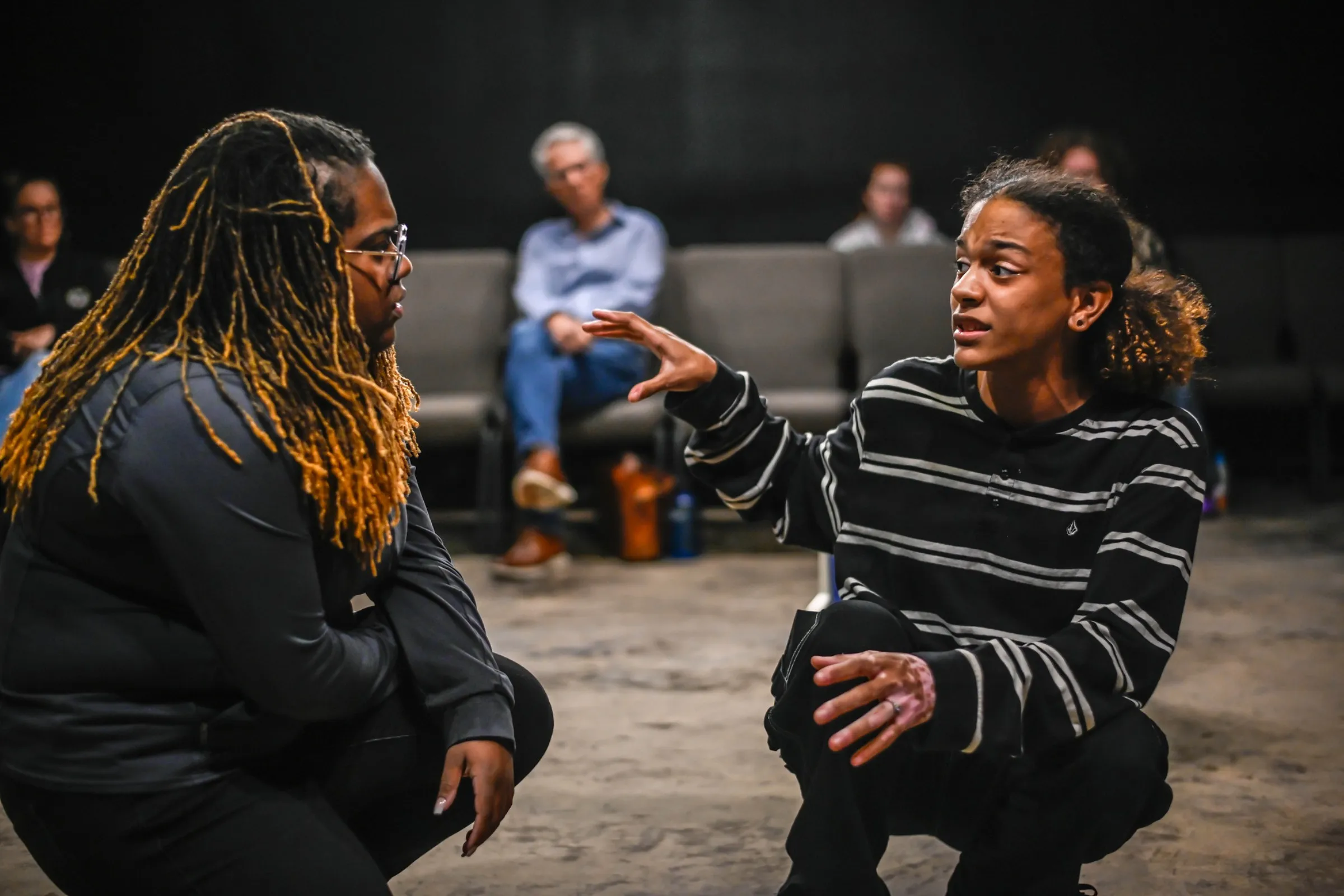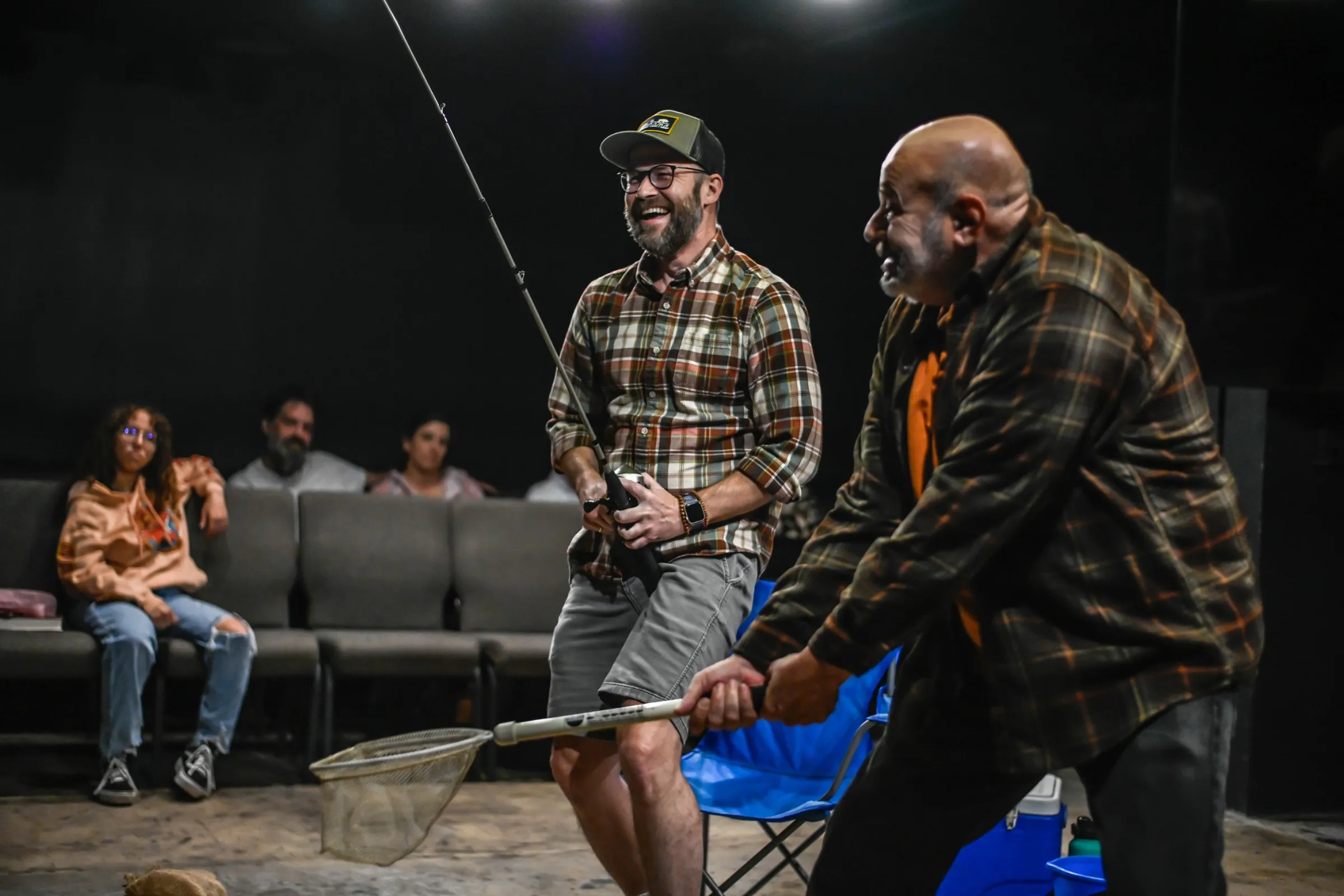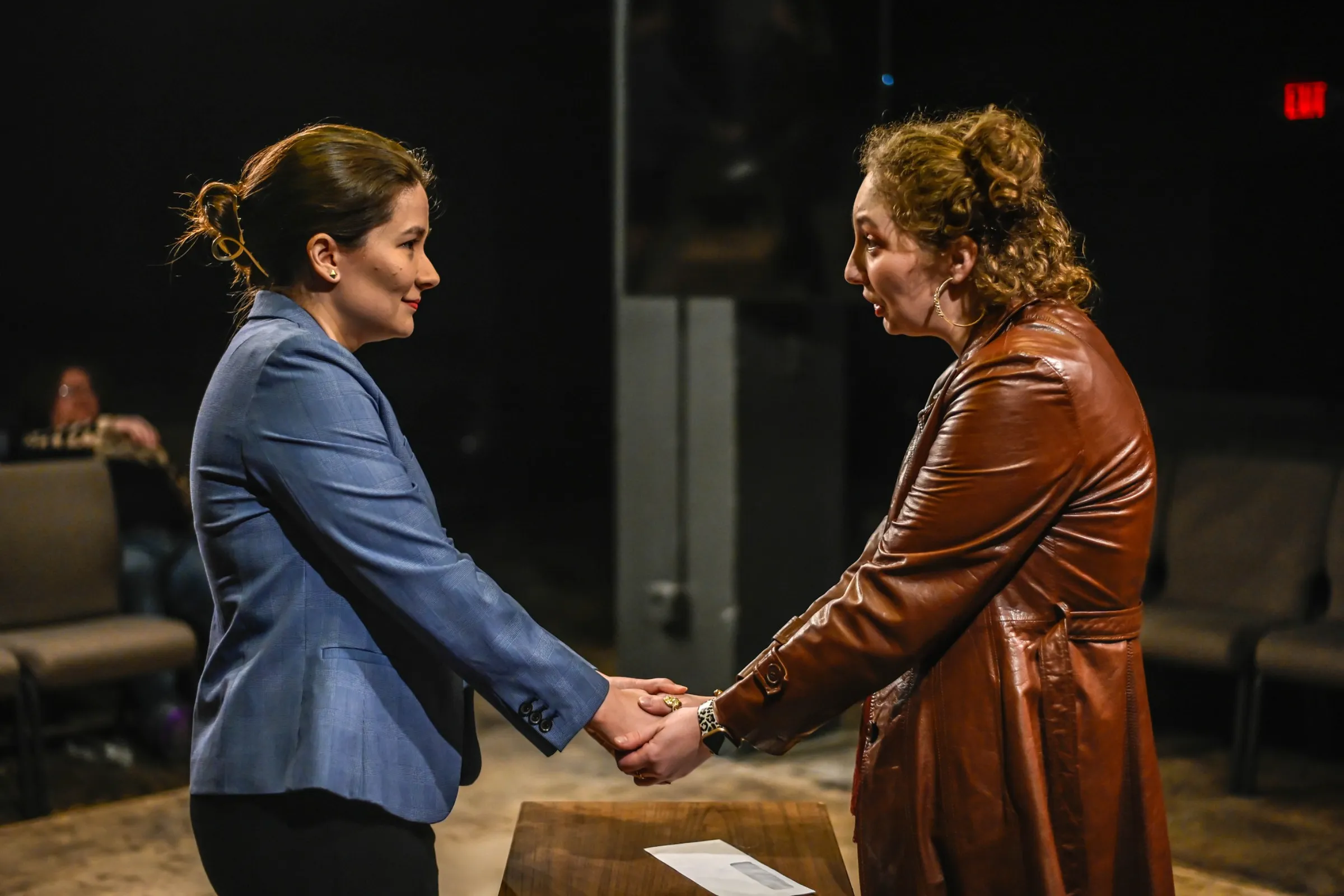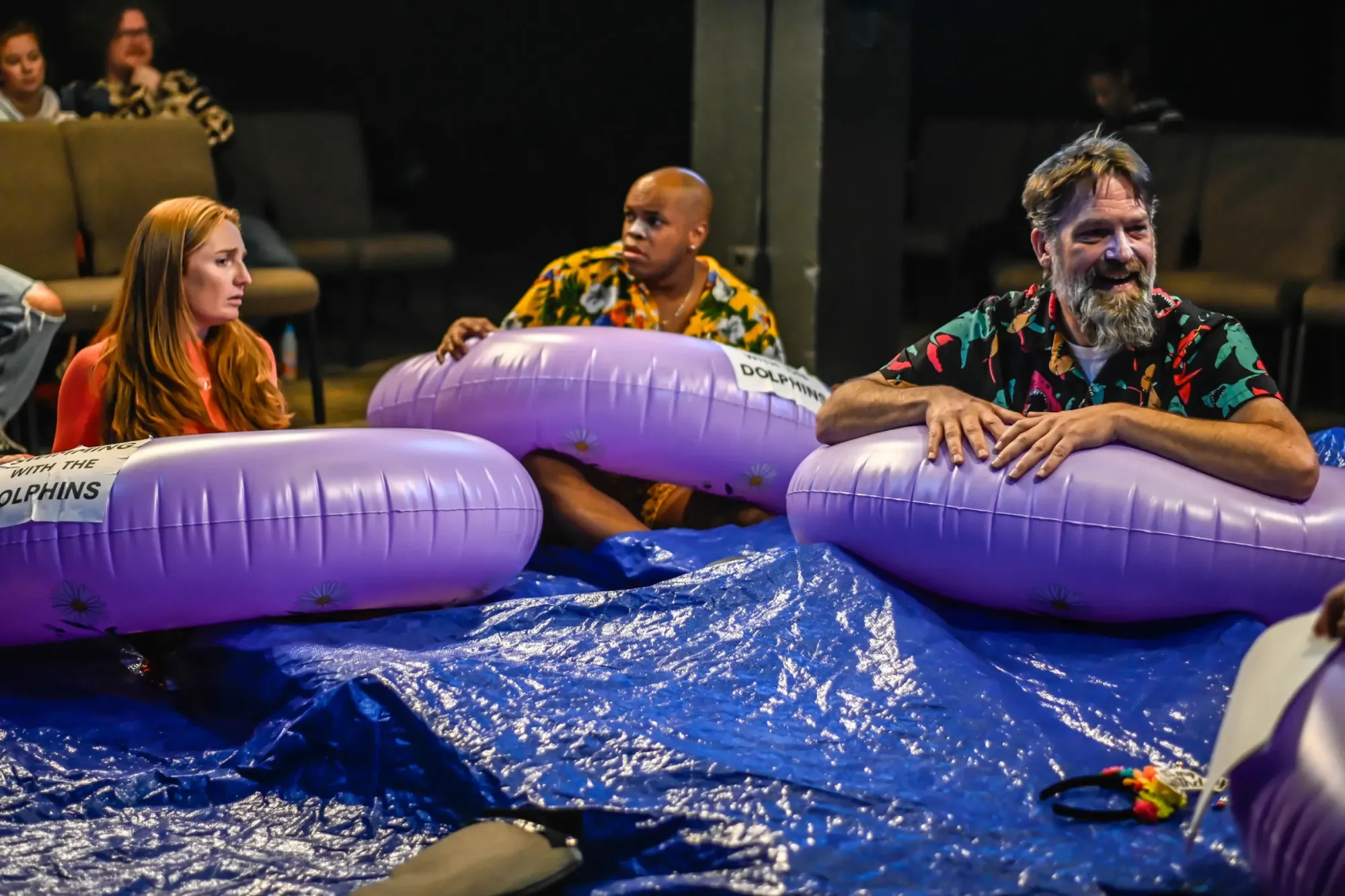Heller Shorts: Kick Off Your Shorts!
Notion Coffee
Tulsa
Sept. 1, 2024
I went a bunch of places last Sunday afternoon: a backyard garden, a courtroom, a roadside diner with Deadwood vibes (haunted), a shark-infested ocean strewn with human limbs, a psychiatrist’s office, a living room (also haunted), a bathroom, and a fishing hole. Busy day? Or just two hours at Heller Shorts?
Now in its 15th year, Heller Shorts is a fast-paced festival that packs eight 10- to 15-minute original plays into a compact package, at the end of which the audience votes on their favorite. This year’s edition, presented in a little black box space inside Notion Coffee, was typical of the wide-ranging theatre this company regularly delivers — from absurd to bloody to heart-tugging, sometimes all in the same play.
For decades, Heller Theatre Company has been giving local theatre practitioners opportunities to learn and grow through developmental script workshops and short-form chances to direct. (As playwright, theatre educator and longtime Heller associate Michael Wright told me, it can be life-changing to see your own writing “up on its feet.”) This particular shorts festival offered a new angle on Heller’s educational mission: a shot at working “in the round,” where the audience sits on all sides of the performance space instead of viewing it only from the front.

We don’t see a lot of “in the round” theatre in Tulsa; most of our performing arts venues are set up in proscenium stage format, and it’s more common for people who are learning to direct and act here to learn in that setting. Making a play “legible” from all sides of the action takes some ingenuity. For instance, setting a scene so that one actor’s back is to one section of the audience all the time means we only get to see what that character sees, and never his own actions and reactions. Such was the case in Samantha, an excellent “cat and mouse” script by Shadia Dahlal, which had Sidney Flack and D’mi Johnson sitting across from each other at an angled table throughout. Although Flack, a master actor, did as much as he could to communicate 360 degrees around himself, I got less of the full play, sitting directly behind him, than I’d have gotten if the actors had been guided to get up and move around.
But this festival was the place to work on working this way, and all the experiments were useful ones. The most successful — like Bailey James’ The Hearing, directed by Alex Isaak, or Jenny Clyde’s Men Go Fishing, directed by Wright — kept a good balance between varying the actors’ spatial orientation and not doing so much that the script got overwhelmed. Some of the simplest devices were the most effective. Wright used shifting levels and facings (one actor stands and one sits, they switch, both stand, they change sides of the space, one falls and one crouches, both sit) as a subtle support to a spare and poignant piece of writing. This movement score felt natural in the hands of actors John Burns and Timothy Hunter, allowing us to visually track the emotional shifts of an adult son and an aging father whose roles in relation to each other are changing.
For James’ brilliant script (a hilarious and ultimately heartwarming mock trial featuring two sparring roommates as defendant and prosecutor), Isaak kept Nichole Finch manically moving, pacing, stalking, while Rachel Steed stood behind a table, trying to hold her ground as accusations and counter-accusations flew. (A formerly workmanlike cooking pot has been ruined by burned rice; the water bill now reflects the presence of the prosecutor’s boyfriend, Travis, who not only takes frequent baths but follows them with showers.) Isaak’s direction put the audience in the position of a jury literally seeing the conflict from all sides.


Monitors hanging on four columns surrounding the performance space played scene-setting visuals for several plays (a rustic interior, ocean waves, courtroom evidence) and the writing/acting/directing credits for all. On top of the fun of seeing directors — many of whom were directing for Heller for the first time — play with a new format, this Heller Shorts sparkled with tight writing, plus multi-dimensional acting from Heller regulars like Steve Barker, Angela McLaughlin and Liz Masters as well as new faces like Finch, Johnson and the astonishing Jey Madison.
Heller Theatre Company is one of those rare beasts: a group dedicated to experimentation that actually has staying power. Thanks to its dedication to growth opportunities, Tulsa now has eight more directors and 20 more actors with experience working “in the round,” as board director Everett LeViness noted in his opening remarks, where he also announced a new Heller initiative aimed at cultivating high school-age playwrights. In a small but lively theatre scene like Tulsa’s, all this experience will likely have a welcome ripple effect.
Next from Heller Theatre Company: Second Sunday Serials at Studio 308, September 8






